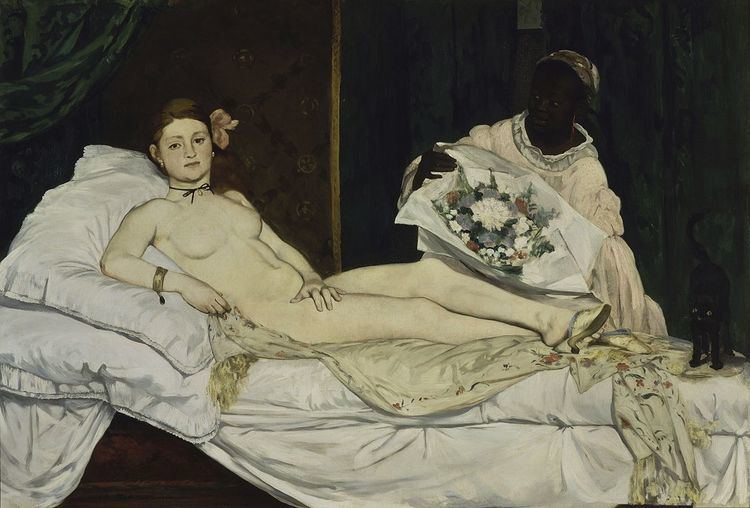Year 1923 Media Oil paint | Dimensions 68 cm x 64 cm Created 1923 | |
 | ||
Similar Henri Matisse artwork, Artwork at National Gallery of Art, Oil paintings | ||
Odalisque With Raised Arms is a painting by Henri Matisse that was competed in 1923. The medium is oil on canvas, and the painting is 23 inches by 26 inches. It currently hangs in Washington D.C. in the National Gallery of Art. Matisse’s style changed and evolved drastically throughout his career due to World War I and World War II occurring in his lifetime, therefore he has a wide and wavering collection of paintings depicting the nude female. His Odalisque paintings were inspired by his trip to Morocco. Many of the female subjects in the Odalisque paintings were modeled after Matisse's main model at the time: Henriette Darricarrière.
Contents
The Composition
The subject of the painting is a woman sitting in a green and yellow striped armchair. Her figure and the chair take up the majority of the canvas. She is nude except for sheer, gold-trimmed harem pants that covers her legs and touches the floor. The woman is heavily sexualized by her suggestive pose and how Matisse portrays the curvature of her body. Her breasts are round and idealized. However, the whole body of the sitter is not idealized because she has hair under her arms, which was considered scandalous by contemporary critics. The brushwork in the painting is loose and shows the gestural movements of the artist. The painting has very little spatial depth, forcing the viewer to confront the woman in the foreground. The architectural and decorative elements further focus the viewer on the seated female. The shadows and curvature of her body is accentuated in contrast with the flat rendering of patterns in the planes behind her. The red decorative element, possibly a tapestry or a painting, hanging on the wall and the striped armchair that she is sitting in offer movement to the viewer’s eye. As the viewers gaze is taken around the painting by the geometric shapes to the pattern, and after their gaze glazes over the flat olive wall and muted orange floor the viewer will come to rest upon the reclined female. The air of comfortability that the woman exudes ensures that even as the viewer’s gaze is taken around the painting, it will always land on the female.
Matisse's Model
Matisse’s model for many of his paintings including Odalisque with Raised Arms is Henriette Darricarrière. Darricarrière was born in 1901, she studied ballet, violin, piano, and painting. She sat for Matisse from 1920 to 1927.
Morocco and the Odalisque
Matisse was inspired to paint his Odalisque’s by his trip to Morocco in 1912, he argues for the legitimacy of the subject by stating “‘I do Odalisques in order to do nudes. But, how does one do a nude without being artificial? And then I do them because I know they exist. I was in Morocco, I have seen them” The word “odalisque” is derived from the Turkish word Odalik, which means chambermaid or female harem slave. Matisse would recreate the Moorish interior that he experienced on his trip by decorating parts of his studio with his collections of “oriental” objects such as tapestries, mirrors, ornate screens, decorative wall hangings, and elaborate costumes.
Fauvism
Matisse created many Odalisque paintings in the nineteen-twenties, when Henriette Darricarrière was his main model, and when he was still working loosely under the style of fauvism. Fauvism in painting is characterized by the isolation of individual brush strokes on the canvas and coloristic freedom that moves away from naturalistic representation. The repetition of the Odalisque as the subject was in a way a medium for Matisse to work through and explore his artistic purposes.
